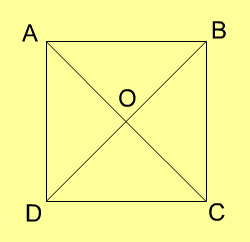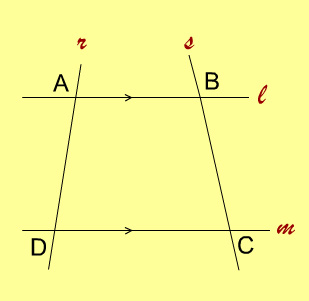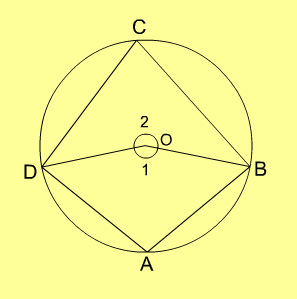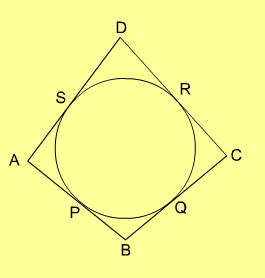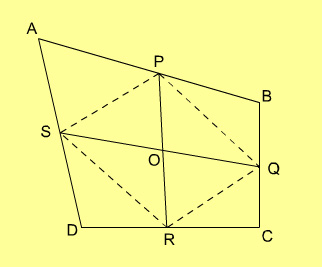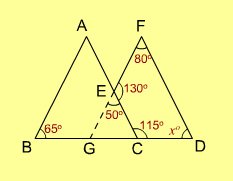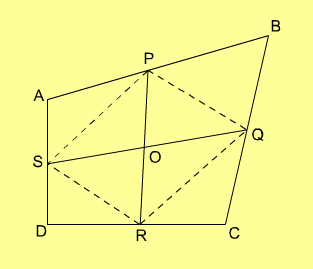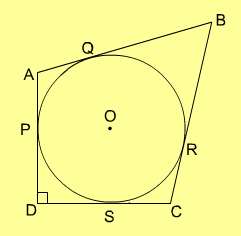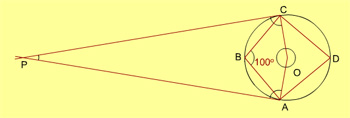PRACTICE QUESTIONS ON QUADRILATERALS
Examination Questions on Quadrilaterals
Click on the option you think is right and then check by clicking on the Show Answer button. You can change your option as many times as you like.
1. ABCD is a quadrilateral such that BC = BA and CD > AD. Which one of the following is correct?
- angle BAD = angle BCD
- angle BAD < angle BCD
- angle BAD > angle BCD
- 2angle BAD = angle BCD
2. A quadrilateral ABCD is inscribed in a circle. If AB is parallel to CD but AD is not parallel to BC and AC = BD, then the quadrilateral must be a
- parallelogram
- rhombus
- trapezium
- None of the above
3. If the diagonals of a quadrilateral are equal and bisect each other at right angles, then the quadrilateral is a
- rectangle
- square
- rhombus
- trapezium
4. If two parallel lines are cut by two distinct transversals, then the quadrilateral formed by the four lines is always a
- square
- parallelogram
- rhombus
- trapezium
5. 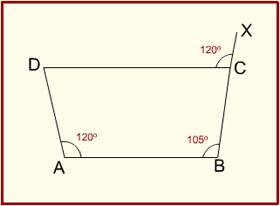
In the quadrilateral ABCD shown above, ∠DAB = ∠DCX = 120°. If ∠ABC = 105°, what is ∠ADC equal to?
- 45°
- 60°
- 75°
- 95°
6. If A, B, C, D are the successive angles of cyclic quadrilateral, then what is cos A + cos B + cos C + cos D equal to?
- 4
- 2
- 1
- 0
7. Consider the following statements:
- The opposite angles of a cyclic quadrilateral are supplementary.
- Angle subtended by an arc at the centre is double the angle subtended by it at any point on the remaining part of the circle.
Which one of the following is correct in respect of the above statements?
- Statement-1 => statement-2
- Statement-2 => statement-1
- Statement-1 => statement-2
- Neither statement-1 => statement-2 nor statement-2 = statement-1
8. ABCD is a quadrilateral, the sides of which touch a circle. Which one of the following is correct?
- AB + AD = CB + CD
- AB : CD = AD : BC
- AB + CD = AD + BC
- AB : AD = CB : CD
9. 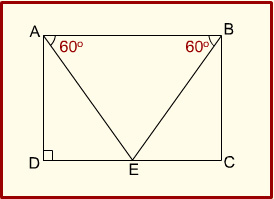
In the figure given, ABCD is a quadrilateral with AB parallel to DC and AD parallel to BC. ADC is a right angle. If the perimeter of the triangle ABE is 6 units, what is the area of the quadrilateral?
- 2√3 square units
- 4 square units
- 3 square units
- 4√3 square units
10. Consider the following statements in respect of a quadrilateral :
- The line segments joining the midpoints of the two pairs of opposite sides bisect each other at the point of intersection.
- The area of the quadrilateral formed by joining the midpoints of the four adjacent sides is half of the total area of the quadrilateral.
Which of the statements given above is/are correct?
- 1 only
- 2 only
- Both 1 and 2
- Neither 1 nor 2
11. ABC is a triangle in which AB = AC. Let BC be produced to D. From a point E on the line AC let EF be a straight line such that EF is parallel to AB. Consider the quadrilateral ECDF thus formed. If angle ABC = 65° and angle EFD = 80°, then what is angle FDC equal to?
- 42°
- 41°
- 37°
- 35°
12. The quadrilateral formed by joining the mid-points of the sides AB, BC, CD, DA of a quadrilateral ABCD is
- a trapezium but not a parallelogram
- a quadrilateral but not a trapezium
- a parallelogram only
- a rhombus
13. 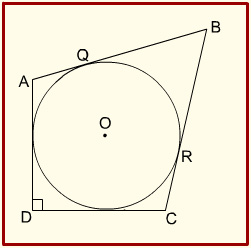
In the figure given above, a circle is inscribed in a quadrilateral ABCD. Given that BC = 38 cm, QB = 27 cm, DC = 25 cm and AD is perpendicular to DC. What is the radius of the circle?
- 11 cm
- 14 cm
- 15 cm
- 16 cm
14. ABCD is a concyclic quadrilateral. The tangents at A and C intersect each other at P. If angle ABC = 100°, then what is angle APC equal to?
- 10°
- 20°
- 30°
- 40°
15. 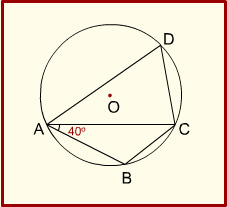
In the figure given above, O is the centre of a circle circumscribing a quadrilateral ABCD. If AB = BC and angle BAC = 40°, then what is angle ADC equal to?
- 50°
- 60°
- 70°
- 80°


